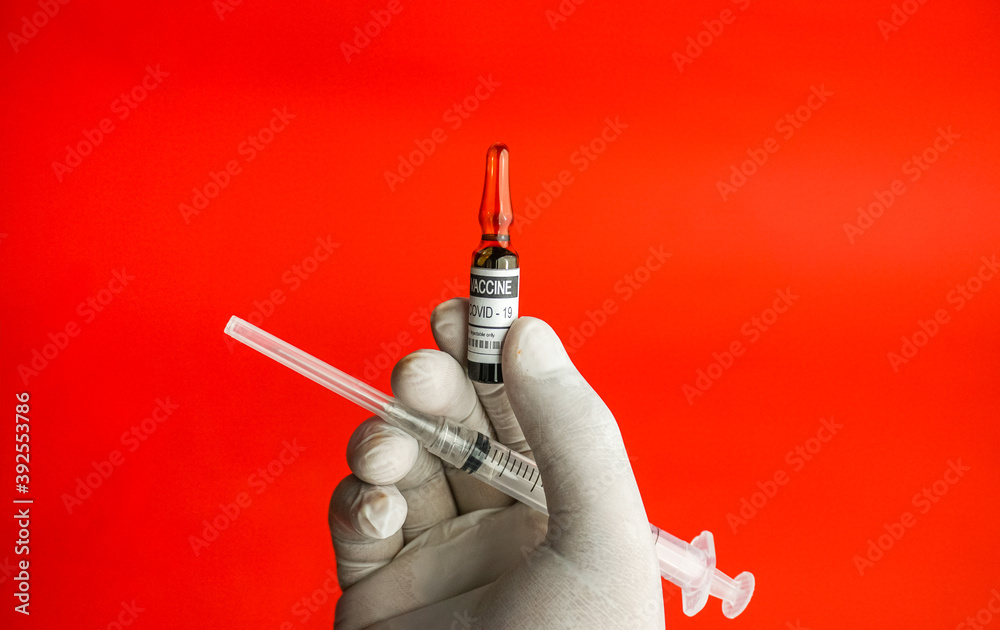This article was originally published by Rhoda Wilson at The Daily Exposé.
An analysis of over 1,000 reports of COVID-19 vaccine shedding reveals that the most common symptoms, by far, are gynecological.
Outside of menstrual abnormalities, the most commonly reported symptoms include headaches, tinnitus, nosebleeds, bruising, dizziness, skin rashes, and reactivation of latent conditions such as shingles.
The analysis also revealed that there are varying degrees of susceptibility to the effects of vaccine-shedding, different routes of exposure, different timings of the onset of symptoms after exposure and that young and healthy people tend to shed more frequently than the elderly.
In early 2022, A Midwestern Doctor (“AMD”) had personally come across a few compelling cases of menstrual-related vaccine-shedding injuries which were very difficult to ascribe to anything else. At the time the idea of vaccine shedding seemed to be a “radical idea.”
The world has changed a lot since that time, AMD wrote. “I believe the reality of ‘shedding injuries’ now has a similar degree of acceptance to what COVID-19 vaccine injuries had two years ago.”
Adding, “I regret that it’s taken this long to get to this point and I feel really bad for the people who are suffering from this (e.g., a few of my patients), as it’s almost inevitable healthcare professionals will assume they are crazy and gaslight them about shedding.”
COVID-19 vaccine shedding – becoming ill from vaccinated people – represents the one way the unvaccinated are also at risk from “vaccines” and hence still need to be directly concerned about them.
Speaking about vaccine shedding can be difficult for scientists and medical professionals because the topic runs the risk of causing division within the “freedom movement.” Resentful unvaccinated members of the public who have been subjected to vitriol can easily turn to using cutting comparisons such as “pure blood” versus “the vaccinated.” Another reason that makes vaccine shedding difficult to openly discuss is the risk of causing fear.
“The vaccines were marketed on the basis of division (e.g., by encouraging immense discrimination against the unvaccinated), and many unvaccinated [people] thus understandably hold a lot of resentment for how the vaccinated treated them. We do not want to perpetuate anything similar (e.g., discrimination in the other direction),” AMD said. “Likewise, we don’t want to create any more unnecessary fear – which is an inevitable consequence of opening up a conversation about shedding.”
AMD has been collecting vaccine-shedding experiences noted by readers under a Substack article HERE. At the time of writing, AMD had collected over 1,000 vaccine-shedding stories.
“Enough data has been compiled for it to constitute evidence of a very real phenomenon,” AMD argued. Adding, “The information we’ve collected [ ] is on relatively solid ground (e.g., most of the claims have a source) – and which I believe will be helpful to many of the readers.”
Having looked into vaccine shedding extensively, AMD is relatively sure of the following:
- Shedding is very real.
- People’s sensitivity to it greatly varies.
- Most of the people who are highly sensitive to shedding have already figured it out, so if you do not already believe it is an issue for you, you probably don’t need to worry about it.
- There is still no agreed-upon mechanism to explain why it happens.
Is Shedding Possible?
Typically, shedding occurs (e.g., from a live viral vaccine like MMR or polio) because a person “sheds” a self-replicating form of the disease.
But AMD was seeing numerous clear-cut cases of shedding occurring from mRNA “vaccines” which suggested, “I was missing a huge piece of the puzzle.”
AMD could also not help but notice that Pfizer’s protocol for testing their vaccine highlighted caution of shedding to pregnant women and breastfeeding women.
This suggested either that Pfizer knew shedding was a real problem, or that they were following the existing standards – the FDA stipulates that gene therapies need to be evaluated for shedding before being given to humans (and subsequently tested for shedding in humans). For context, both the FDA and the EMA classify the mRNA vaccines as a gene therapy.
It should be noted that the prescribing information for the first approved gene therapy, an eye medicine called Luxturna (which works like the J&J vaccine), specifies care must be taken to avoid anyone else coming in contact with the tears of the person using Luxturna to prevent unintended shedding of the product.
A similar gene therapy, Roctavian was also found to shed (e.g., into semen) and gene therapy Zolgensma was also found to shed for a month.
However, curiously, the package inserts for Pfizer’s covid vaccine do not mention shedding despite the fact it has long since been proven. Likewise, J&J’s vaccine, which is very similar to the currently approved viral gene therapies, does not mention shedding in its inserts either.
AMD suspects Pfizer had concerning data on the issue of shedding but chose not to disclose it so that it could be claimed there was “no evidence” of shedding.
The strongest proof for COVID-19 vaccine shedding comes from the observations of patients by Drs. Pierre Kory and Scott Marsland at their clinical practice which is dedicated to treating vaccine injuries.
The two doctors have observed more than twenty patients develop similar symptoms after a shedding exposure, particularly after a “strong” shedding exposure. The symptoms resemble what is seen in other spike protein pathologies (e.g., long covid or mRNA vaccine injury) which often respond to the same treatments used for treating other spike protein pathologies (e.g., ivermectin which binds the spike protein).
Drs. Kory and Marsland have also noticed that many patients will repeatedly have shedding symptoms emerge after the same exposure (e.g., always feeling ill when a vaccinated husband returns from a long trip away, when going to church each week, when singing with their choir, or when taking a crowded route to work). And found that eliminating the shedder from the patient’s life or treating the (asymptomatic) shedder with a vaccine injury protocol significantly helps their patient get well.
Further reading: “Shedding” of Covid mRNA Vaccine Components and Products from The Vaccinated to the Unvaccinated – Part 1, Dr. Pierre Kory, 1 November 2023
AMD also noted that a 2023 peer-reviewed study found unvaccinated people who were around covid vaccinated people developed an immune response to the spike protein. “This demonstrates that something is indeed being transferred from the vaccinated to the unvaccinated (e.g., the spike protein),” AMD said.
Further reading:
- Pfizer document confirms ‘Covid Vaccine Shedding’ leading to ‘Menstrual Cycle Disruption’ and ‘Miscarriage’ is possible via ‘skin-to-skin contact’ and ‘breathing the same air’, The Exposé, 4 May 2021
- Vaccine-Induced Infertility and Birth Defects: Taking A Look at A New Study on Fertility Plus Pandemic “Black-Eyed” Babies, The Exposé, 14 October 2021
- A New Study Provides Evidence of Vaccine “Shedding”, The Exposé, 4 May 2022
- Vaccines that Spread Like a Virus, The Exposé, 15 June 2022
- FDA Has Known About Vaccine Shedding for Years and Has Even Issued Guidance on How to Evaluate the Risk, The Exposé, 8 September 2022
- Attorney discovers “smoking gun evidence” that COVID injections are pre-meditated murder, The Exposé, 9 January 2024
- A List of Post-Vaccination Resources – Help Us to Help You, The Exposé, 3 October 2022
Susceptibility to Exposure
Virus vector vaccines – e.g., J&J, AstraZeneca, Sputnik, or Sinovac – operate under different principles to mRNA “vaccines.” To keep the article as short as possible, AMD focused on mRNA “vaccines” and did not venture to discuss exposure to those injected with virus vector vaccines.
Sensitivity to shedding varies immensely. In general, there seem to be three categories of people who are susceptible to shedding:
- Sensitive patients tend to be the most susceptible to shedding. These patients tend to be highly sensitive to toxins in their environment, be very empathetic and perceptive of subtle qualities others do not notice, have an ectomorph or sattvic constitution, and frequently have ligamentous laxity.
- Patients who have been sensitized to the spike protein due to a previous vaccine injury or having long COVID-19. These patients in turn frequently find their symptoms worsen when they are around vaccinated people and many have reported that their sensitivity to shedding increases with time.
- People who cannot effectively produce antibodies to the spike protein. Their ability to develop a neutralizing antibody for the spike protein was impaired, leading to a large amount of free spike protein circulating in their blood. Because of this, the spike protein being produced in their body can create havoc throughout and those patients become symptomatic after being exposed to a much lower concentration of the spike protein.
Characteristics of Shedders
There are two forms of shedding: primary (where someone gets ill from being around a vaccinated person) and secondary (where someone gets ill from being around an unvaccinated person who was recently around vaccinated people). Primary shedding is much more common.
The most common observation with shedders is that they are dramatically more likely to shed soon after vaccination. Depending on who you ask, this window ranges from three days to four weeks. However, more, sensitive patients find they are affected by a shedder indefinitely and strongly disagree with a 2- to 4-week cutoff.
It has also been observed that young and healthy people tend to shed more frequently; children shed the most and the elderly shed the least.
Quite a few people have noticed that shedding events (in the same location) are the most frequent and severe immediately following a new booster rollout, after which they gradually diminish until the next booster campaign.
Repeatedly boosting appears to worsen shedding for three reasons:
- Booster injections cause patients to resume having high spike protein levels in their body as typically after vaccination or boosting, there is a spike and then decline of spike protein which persists at a low level for months – no study has yet assessed if it lasts for years.
- Successive boosting appears to increase the degree of shedding which occurs when compared to the previous injections the patient experienced.
- Quite a few holistic healers have shared that they believe the most recent boosters are more potent and hence cause greater shedding than the earlier ones; which might be explained by the boosters now containing multiple strains of mRNA to cover the new variants.
Routes of Exposure
There appear to be three possible routes of exposure:
- General proximity to the vaccinated person. Many have said they find shedding to be greatly mitigated when outdoors.
- Through skin-to-skin contact. This is thought to be due to the spike protein being “shed” in the sweat. People AMD trusts have stated spike is excreted in the sweat. However, when AMD tried to find information relating to it, he/she could only locate research that suggested that it was excreted through sweat.
- There is also some evidence shedding occurs in other secretions, e.g., breast milk and saliva.
Timing of Exposure
There seem to be three common periods after exposure that people experience symptoms of vaccine shedding:
- Immediate.
- 6 to 24-hour delay.
- Long-term delay. This is often seen in the patients who have the most severe complications from vaccine shedding.
In each of these cases, patients will typically recover after a few days but many patients reported a permanent (partial or debilitating) illness after the shedding exposure.
Symptoms of Exposure
Many of the symptoms of shedding appear to match what is seen in both long COVID and vaccine injuries suggesting this is a spike protein-mediated disease. By far the most commonly reported symptoms are gynecological. Of these, menstrual abnormalities are by far the most common.
In some cases, highly unusual menstrual abnormalities occur, e.g., profuse bleeding which sometimes is voluminous enough anemia or massive clots they’ve never seen before being passed. Many post-menopausal women have reported that shedding caused them to either bleed or develop severe menstrual cramps.
Decidual cast shedding is a very rare condition. For example, one paper that looked into this found that before the vaccines, less than 40 cases of it had been reported in medical journals across the world – making the condition rare enough that it is impossible to estimate how frequent it is. Yet, in a 2021 survey to which 6,049 vaccinated and unvaccinated women responded, 292 (4.83% of respondents) reported a decidual cast shedding event, of whom 277 had never been vaccinated. Of those 277, most reported having been around vaccinated people.
Further reading: Unprecedented Number of Women Experience Rare Gynaecological Event, The Exposé, 13 May 2022
Outside of menstrual abnormalities, the most commonly reported symptoms are:
- Headaches that are often described as migraines.
- Tinnitus.
- Nosebleeds. These are often profuse, frequent throughout the day, and immediately following exposure to a vaccinated person.
- Painless and inexplicable bruising. Sometimes many tiny bruises spontaneously emerge but more frequently large painless bruises are observed.
- Dizziness, which in many cases occurs immediately after physical intimacy with a vaccinated partner.
- Mental cloudiness and a general feeling of being unwell (e.g., how you feel before the flu).
- Reactivation of latent conditions. In the same way that the COVID-19 vaccines cause immune suppression and reactivate latent infections such as Lyme or EBV, lighter versions of latent reactivations have also been seen after shedding events. The most commonly reported reactivation after a shedding exposure is shingles.
- Skin rashes. Most frequently these resemble hives, although a few people also reported psoriasis, shingles-like rashes and areas that felt like a rash but not were visible.
Further reading: Covid Vaccine-Associated Tinnitus Needs to be Studied, The Exposé, 1 April 2022
Some of the less frequent symptoms AMD sees being repeatedly reported, which are also frequently seen after covid vaccination, include:
- Atrial Fibrillation. Many have also reported heart palpitations or premature ventricular contractions (“PVCs”).
- Muscle pain. This seemed to be a mix of the typical aches felt at the onset of flu-like symptoms, severe or chronic cramps and tightening or pain in areas (e.g., the calves), in places where muscle pain was frequently reported after mRNA vaccination (e.g., this was one of the most common side effects reported by Pfizer in their original clinical trial).
- Seizures.
- Insomnia.
- Hair loss.
- Swollen lymph nodes.
- Severe abdominal pain.
- Sinus pressure or a copious nasal discharge.
- Eye issues such as microclots to the eyes.
Some of the rare symptoms shared by AMD’s readers included:
- Multiple signs of a stroke.
- Severe blood clots.
- Severe heart injuries in children.
- Polymyalgia Rheumatica, a debilitating autoimmune disease repeatedly seen after covid vaccination.
- One case of progressively worsening seizures which led to a fatal seizure after a Thanksgiving dinner with vaccinated family members.
- One case of cancer.
- A shaking, buzzing, or feeling as though fireworks were going off inside the body.
- One case of psychiatric complications.
You can read A Midwestern Doctor’s full article ‘What We’ve Learned from Over a Thousand Vaccine Shedding Reports’ HERE.










0 Comments